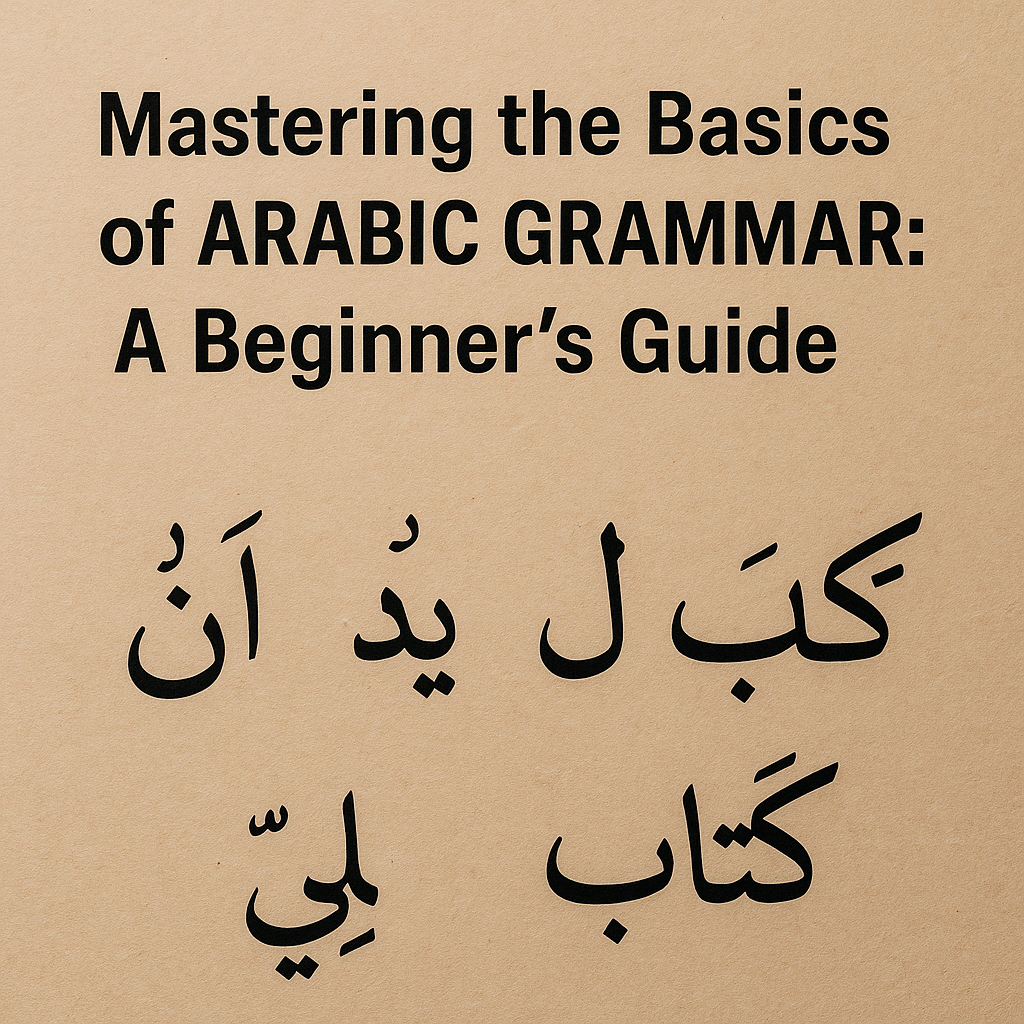Mastering the Basics of Arabic Grammar: A Beginner’s Guide

Arabic is one of the most beautiful, expressive, and structured languages in the world. Its deep roots in history, culture, and religion make it a valuable language to learn for millions around the globe. But for beginners, diving into Arabic can be overwhelming, especially when it comes to grammar. This is why mastering the basics of Arabic grammar is the key to unlocking your fluency.
Whether you’re studying for travel, work, religious understanding, or cultural exploration, starting with the right foundational knowledge is essential. In this guide, we’ll break down the basics of Arabic grammar in a simple, approachable way, and we’ll show you how the Al Arabiya Institute can help you learn Arabic online with ease, confidence, and structure.
Why Grammar Matters in Arabic
Grammar is the backbone of any language—but in Arabic, it’s the heart and soul. Arabic grammar (known as النحو / an-naḥw) is incredibly logical and rule-based. When you understand how Arabic sentences are formed, how verbs change according to tense and subject, and how nouns interact, you unlock the ability to read and understand both modern texts and classical writings.
So, what are the basics of Arabic grammar that every learner should know?
1. Arabic Alphabet and Pronunciation
Before even diving into sentence structure, mastering the Arabic alphabet is step one. Arabic has 28 letters, written from right to left. Each letter changes shape depending on its position in the word: initial, medial, final, or isolated. While this can seem complex at first, with guided learning it becomes second nature.
In addition to the letters, pronunciation plays a huge role. Arabic contains several sounds that don’t exist in English, such as ʿAyn (ع) and Ḍād (ض). Focusing early on correct pronunciation and listening practice is crucial.
At Al Arabiya Institute, beginners get step-by-step training in both alphabet recognition and pronunciation, helping you build a strong foundation from day one.
2. Nouns and Gender
Arabic nouns have gender—either masculine or feminine. Most feminine words end in the letter taa marbuta (ة), while masculine words typically do not. Understanding gender is important because it affects adjectives, verbs, and pronouns in the sentence.
For example:
-
معلم (muʿallim) – male teacher
-
معلمة (muʿallima) – female teacher
In the basics of Arabic grammar, learning how gender affects sentence structure is essential. You’ll soon see how adjectives agree with nouns in both gender and number, which leads us to our next key point.
3. Adjective-Noun Agreement
In Arabic, adjectives follow the noun they describe and must agree in gender, number, and definiteness.
For example:
-
رجل طويل (rajul ṭawīl) – a tall man
-
امرأة طويلة (imraʾa ṭawīla) – a tall woman
Mastering this agreement system is one of the early steps in understanding the basics of Arabic grammar, and it’s where many beginners make mistakes without proper guidance.
4. Definite vs. Indefinite Nouns
Arabic distinguishes between definite and indefinite nouns using the prefix الـ (al-) for definiteness.
-
كتاب (kitāb) – a book
-
الكتاب (al-kitāb) – the book
This affects how sentences are constructed, particularly in nominal sentences, which we’ll talk about next. If you want to build solid grammar, you need to become comfortable identifying and using definiteness early on.
Al Arabiya Institute’s courses cover these grammar points in a logical, structured progression so that beginners don’t feel lost or overwhelmed.
5. Nominal vs. Verbal Sentences
Arabic has two main types of sentences: nominal (beginning with a noun) and verbal (beginning with a verb).
Nominal Sentence Example:
-
الولد ذكي (al-walad dhakī) – The boy is smart
Verbal Sentence Example:
-
ذهب الولد إلى المدرسة (dhahaba al-walad ilā al-madrasah) – The boy went to school
Nominal sentences often omit the verb “to be” in the present tense, while verbal sentences follow a specific subject-verb-object order.
These sentence types are a core part of the basics of Arabic grammar, and learning to distinguish them helps you form clear, grammatically correct sentences from the very beginning.
6. The Arabic Verb System
Arabic verbs are built on three-letter roots and follow predictable patterns. The most basic form is the past tense (الماضي), and from there, other forms are derived.
For example, the root ك-ت-ب relates to writing:
-
كتب (kataba) – he wrote
-
يكتب (yaktubu) – he writes
-
اكتب (uktub) – write! (imperative)
The patterns of verb conjugation based on tense, subject, and number are essential to the basics of Arabic grammar, and understanding these from the start can save learners from confusion down the road.
Al Arabiya Institute’s online lessons teach verbs in context, using real-life situations so you can apply them naturally.
7. Pronouns and Subject-Verb Agreement
Arabic has singular, dual, and plural pronouns—all of which affect verb conjugation. For example:
-
أنا (anā) – I
-
أنتَ / أنتِ (anta / anti) – you (m/f)
-
هو / هي (huwa / hiya) – he / she
-
نحن (naḥnu) – we
Each of these has a corresponding verb form. Learning subject pronouns and how verbs change accordingly is another vital part of the basics of Arabic grammar.
8. Prepositions and Simple Phrases
Arabic prepositions are usually followed by nouns in the genitive case. Some of the most common prepositions include:
-
في (fī) – in
-
على (ʿalā) – on
-
من (min) – from
-
إلى (ilā) – to
Combining these with simple vocabulary helps you build essential phrases like:
-
أنا في البيت (anā fī al-bayt) – I am at home
-
ذهبت إلى السوق (dhahabt ilā al-sūq) – I went to the market
These building blocks are easy to master with interactive exercises and guided conversation practice—something that Al Arabiya Institute specializes in.
9. The Idafa Construction (الإضافة)
One of the unique features of Arabic grammar is the idafa (genitive) construction, used to show possession or relationships between two nouns.
For example:
-
كتاب الطالب (kitāb aṭ-ṭālib) – the student’s book
-
باب البيت (bāb al-bayt) – the house’s door
Understanding idafa is essential to reading and speaking Arabic naturally. It’s a cornerstone of the basics of Arabic grammar and appears frequently in texts and conversations.
10. How to Practice the Basics of Arabic Grammar
Learning grammar isn’t about memorizing rules in isolation—it’s about applying them in context. Here are some tips to help you:
-
Use flashcards for pronouns, prepositions, and verb forms.
-
Read simple Arabic texts daily—even short paragraphs help.
-
Listen to native speakers via podcasts or YouTube to absorb grammar naturally.
-
Take structured online courses that focus on progression, repetition, and application.
And of course, choose a program that supports you from the ground up.
Learn the Basics of Arabic Grammar with Al Arabiya Institute
If you’re serious about learning Arabic in a structured, affordable, and effective way, we highly recommend Al Arabiya Institute.
Here’s why:
-
🟢 Courses tailored for all levels, from absolute beginners to advanced learners
-
🟢 Focus on the basics of Arabic grammar, vocabulary, and conversation
-
🟢 Expert native Arabic teachers with years of experience
-
🟢 Flexible schedules and free trial lessons so you can start risk-free
-
🟢 Best prices for high-quality Arabic online courses
With Al Arabiya Institute, you don’t have to worry about figuring out Arabic grammar on your own. Every lesson is designed to help you master the basics of Arabic grammar in a clear, supportive, and engaging way.
Final Thoughts
The journey to mastering Arabic starts with a firm grasp of the grammar. When you understand the basics of Arabic grammar, everything else—speaking, reading, writing, and listening—becomes much easier. Don’t let complex rules or unfamiliar structures discourage you.
With the right guidance, the right learning environment, and consistent practice, you can speak Arabic with clarity and confidence.
Al Arabiya Institute is here to support you every step of the way. Join today to start your Arabic learning journey with free trial lessons and the best prices online.
👉 Visit https://learning-arabic.com/ and begin mastering Arabic the smart way.







